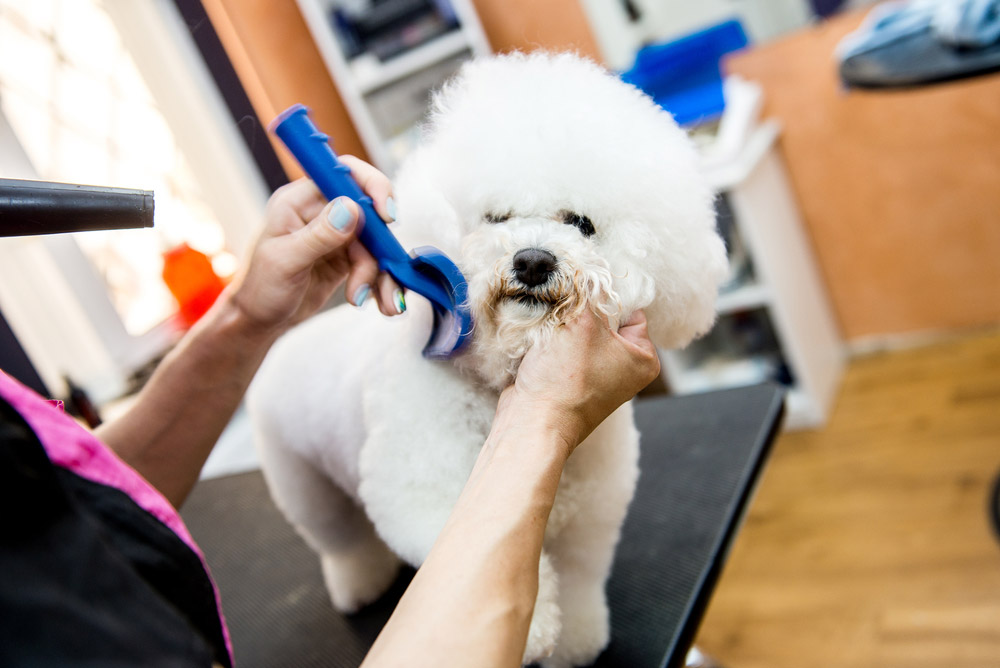In this article
View 3 More +Canada shares the entire upper border with the USA so it’s no wonder we want to explore it. It can be such an enriching place to travel to because of all of the amazing scenery, exciting activities, and rich culture. Why would you not want to share that with your dog?
You can travel to Canada with your canine buddy! So if you’ve been thinking about taking your dog to the Great White North, you might have wondered what the stipulations are and what kinds of documentation you need to bring along for your journey. There are very specific laws on this and it’s the best idea to brush up on the laws ahead of time then to find out when you get to the border.

Canadian Requirements on Traveling with Dogs
Certain requirements must be met before you are granted entry into the country. Keep reading below to ensure a trouble-free trip.
The travel requirements are as follows:1
Certified Guide, Hearing, or Service Dogs
If you have a certified guide, hearing, or service dog, you do not need to provide current proof of the rabies vaccine.

Pet Dogs Older than 8 Months
Pets that are older than 8 months may not require any health certificate, but that isn’t absolute. Always make sure to check before you drive up. In almost every scenario, all your dog will be required to have is their rabies vaccination.
Pet Dogs Younger than 8 Months

Dogs younger than 8 months might require a health certificate from a licensed vet in the States. If they are traveling with their owner, they only require proof of a current rabies vaccination.
Dogs younger than 3 months won’t need a rabies shot, but they do require a certificate from your vet.

Questions to Ask Yourself Before You Bring Your Dog to Canada
So how exactly do you prepare your dog for international travel? Well, it’s not quite that simple. Not only do you have to prepare your dog, but you’re going to have to check quite a few things off your list as well.
Before you finalize your decision, it’s best to really think about your long-term plan. This starts from understanding if your dog is or isn’t a good travel companion option to a lot of other things that you might not think of initially. Here are some questions you can ask yourself.
1. Is my dog a good candidate for international travel?
Just because you want to take your dog traveling doesn’t necessarily mean that you should. Some dogs are just not cut out for this kind of action. Whether they are very nervous, anxious, aggressive, or otherwise, there might be a good reason to reconsider.
Also, some dogs get car sick, which can create a mess in itself. So, when it comes to everything that you could possibly consider about your dog, do you want to make that move?
2. Is my dog a flight risk?

Is your dog going to run away if they happen to get loose? This is something that you will want to be highly aware of. They’re going to be around a lot of different stimulation, sights, smells—you name it.
If they are a little bit skittish, they might scurry off from you as soon as they get an opportunity based on anxiety or fear. Do you have a proper plan in place to make sure that this doesn’t happen?
3. Is my dog a bite risk?
Sometimes our dogs love us and have the most magical connections to us. However, they do not share that sentiment with other people. If you’re going to take your dog traveling, especially to another country, you need to make sure that they aren’t a bite risk to other people you might be around.
4. Is my dog microchipped?

You might already have your dog microchipped by now. However, if you haven’t done so, you might want to consider doing it before you leave.
It creates an added layer of protection so if your dog gets away from you while you’re away, someone who finds them can have the chips scanned to retrieve your information.
5. Do I have pet insurance?
Pet insurance is becoming an increasingly popular security measure for dogs. If you haven’t gotten a policy before, vacation might be an opportune time to do so.
That way, if you’re on vacation and your dog runs into an emergency, you won’t be caught off guard. You will be able to get the care and coverage necessary.
6. Does my current pet insurance company cover Canadian vets?

Speaking of pet insurance, you might want to make sure that the pet insurance you choose will cover vets in Canada. Many pet insurance companies are interchangeable, but it’s always best to make sure that our neighbors up north accept the insurance before being surprised later.

The 5 Tips for Bringing Dogs Into Canada
1. Make a Vet Appointment
If you’re going to be taking your dog to Canada, you will need to make sure you get all of their vaccines up to date. You will need to show documentation and proof of dog registration at the Canadian border.
You will need to ask your vet to print out these documents when you are at your visit. Plus, this is a good time to bring up any health concerns you might have.
2. Take Your Pup to the Groomer

Take your dog to Canada looking their freshest! If you haven’t taken your dog to the groomer in a while, it might be time to get your puppy a new haircut or freshen up their coat. You can give your pup a little pampering before it’s time to go.
You don’t have to spend a ton of money to do this either. After all, you’re going to spend quite a bit of money already on gas, hotels, or airfare. You can always groom your dog at home, saving yourself the trouble.
3. Gather Up Documents
Once you get all of the appropriate documentation from the vet, it’s time to put it in your luggage. You won’t want to forget that! The last thing you would want to do is be at the Canadian border and have to turn around for lack of proof.
4. Make Sure Your Dog Has Up-to-Date Tags

When it comes to having proper identification, your dog should be wearing it at all times. It’s best to get them a comfortable collar where you can put their identification tags.
5. Get All the Appropriate Gear
To remember everything you need on your checklist, it might be best to make a list of necessary pet supplies. It might even be a good idea to pack your dog their own bag where you can easily access all of their supplies and belongings.

Alternatives to Taking Your Dog to Canada
Sure, you might like your canine buddy to tag along, but that’s not always a feasible option. If you think that your pup might be best left on home territory, here are some alternative options.
Kennels or Boarding Facilities
While you are on vacation, you can take your dog to a kennel or boarding facility. These facilities have everything on hand to make sure your dog is happy and well cared for while you’re away. Staff will cater to your dog, providing proper nutrition and exercise.
The only downside to this option is that they tend to be a little indirect. Your dog won’t get the same one-on-one attention they would in a more intimate setting.

Pet Sitters
Pet sitters would be more than happy to accept a fee for hanging out with your dog while you’re on a trip. What’s really cool about pet sitters is that they come right to your home. Your dog is able to stay in their environment and not go outside of their routine.
Pet sitting has varying fees as it depends on the provider and the rates they charge. Always look for someone who has a sterling reputation, especially if you are giving them access to your home.
Family or Friends
You can always contact family or friends to see if anyone is available to dog sit. If you live relatively close to someone you know, they might be able to come over to feed and let your dog out during the day.
Plus, your dog gets to be around someone that they are already familiar with while you’re out of town.

Conclusion
Now you know all of the rules and regulations about traveling with dogs in Canada. Essentially, all the Canadian government wants to see is that the dog is yours and that the animal is not a danger to others.
All you have to do is get the required documentation and cooperate with the officials at the border, and you and your dog can have a peaceful vacation together.
Featured Image Credit: Igor Kyryliuk, Shutterstock


















